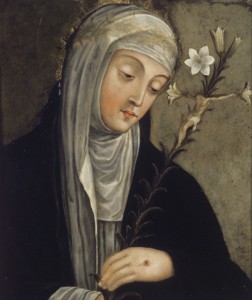
Saint Catherine of Siena (1347-1380)
Image: Saint Dominic Priory
(EWTN) Born in Italy Siena in 1347 Catherine appeared to be favored by God with extraordinary graces as soon as she was capable of knowing Him. When Catherine was still very young, she withdrew into seclusion a little ways out of the town to imitate the lives of the Fathers of the desert–returning after sometime to her father’s home, Catherine continued to be guided by the same spirit and consecrated herself with a vow of chastity to God by a private vow.
Catherine’s love for spiritual discipline, prayer and her sentiments of virtue were such as are not usually found in one so tender in age but God was pleased to put her resolution to a great trial.
At 12 yrs of age, Catherine’s parents thought of engaging her in a married state, she found them deaf to her pleas that she might live single. Catherine thereafter redoubled her prayers, watching and discipline, knowing that her protection must be from God alone.
Catherine’s parents found her inclination to solitude as unsuitable to the life for which they designed for her–they endeavored to divert her from it and began to prevent her devotions, depriving her in this view of the little chamber they had until then permitted. They loaded Catherine with the most distracting jobs and laid on her, all of the drudgery of the house as if she was nothing more than a servant girl. The hardest labor, humiliations, contempt and insults from her sisters were to Catherine a subject of joy and as such was her enthusiastic love of Crosses, that she embraced them in all shapes with a holy eagerness and received all ridicule with admirable sweetness and heroic patience.
If anything grieved Catherine the most, it was the loss of her dear solitude but the Holy Spirit, that interior faithful master to whom she had listened, taught her to make another solitude in her heart–where amidst all of her jobs, she considered herself always alone with God to whose presence she kept herself no less attentive, then if she had no menial jobs to perform that would distract her. In that admirable work of God’s Providence which she wrote:
“That our Lord hath taught her to build in her soul a private closet, strongly vaulted with the Divine Providence and to keep herself always close and retired there. He (God) assured her that by this means she should find peace and perpetual repose in her soul, which no storm or tribulation could disturb or interrupt.”
Catherine’s sisters and other friends attempted to persuade her to join with them in the diversions the world offered, claiming that virtue was not an enemy to neatness in dress or to cheerfulness under which soft names they endeavored to recommend the dangerous liberties of worldly past-times and vanities.
When Catherine was 18 she entered the ‘Dominican Third Order’ according to Franciscan Media and spent the next 3 yrs in seclusion, prayer and austerity (self-discipline) — Gradually a group of followers (Priests, Lay Men and Women) an active public apostolate grew out of her contemplative life.
Catherine’s letters, mostly for spiritual instruction and encouragement of others, began to take more-and-more note of public affairs. Opposition and slander resulted from her mixing fearlessly with the world, speaking with candor and authority of one completely committed to Jesus Christ–Catherine was cleared of all the allegations at the Dominican General Chapter of 1374
Subsequently Catherine’s influenced reached great heights because of her evident holiness, her membership in the ‘Dominican Third Order’ and the deep impression that she made on the Pope. Catherine worked tirelessly for the crusade against the Turks and for peace between Italy Florence and the Pope.
In 1378 the ‘Great Schism’ began splitting the allegiance of Christendom between two, then three Pope’s and putting even Saints on opposing sides.
Catherine spent the final two years of her life in Rome, in prayer and pleading on behalf of the cause of Urban VI and the unity of the Church, offering herself as a victim of the Church in its agony. Catherine passed away at the age of 33 and was Canonized in 1461 by Pope Pius II
More here from Franciscan Media
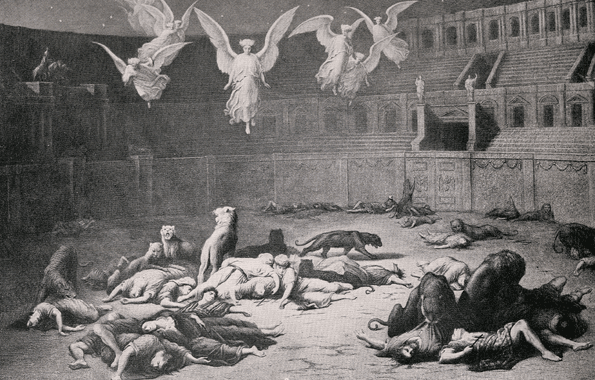 Christian Martyrs –Image: ASB240@Wikispaces
Christian Martyrs –Image: ASB240@Wikispaces 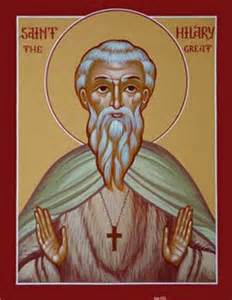
 Prayers to the Saints & Blessed
Prayers to the Saints & Blessed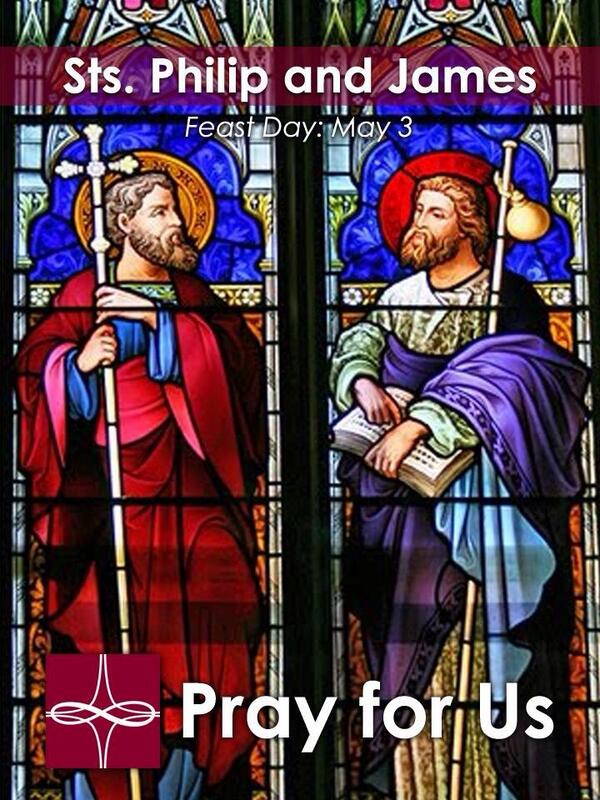 Saints Philip & James
Saints Philip & James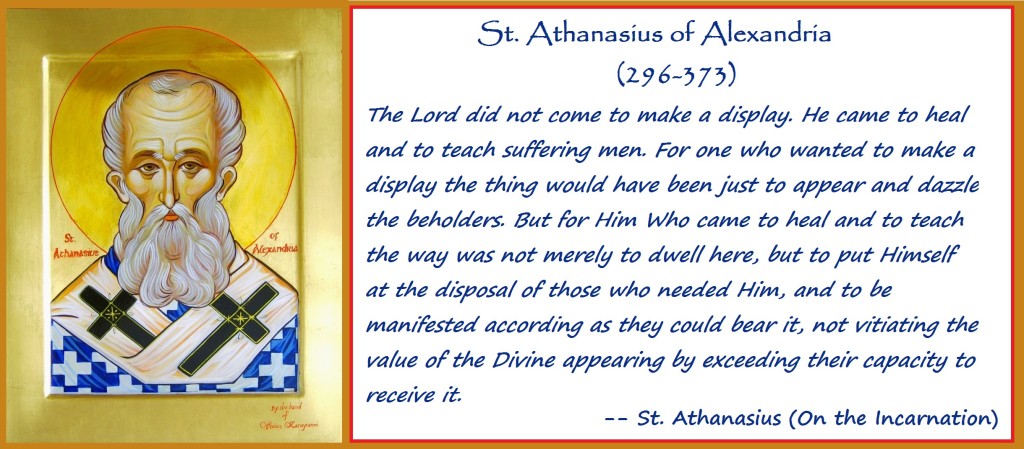 St. Athanasius -Image Courtesy:
St. Athanasius -Image Courtesy: 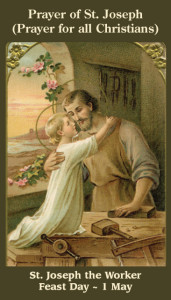
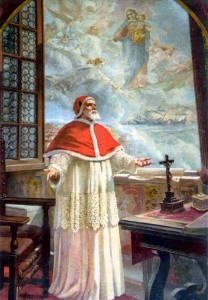

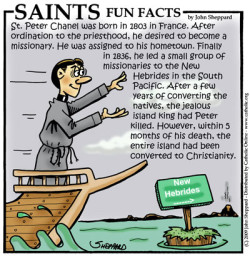
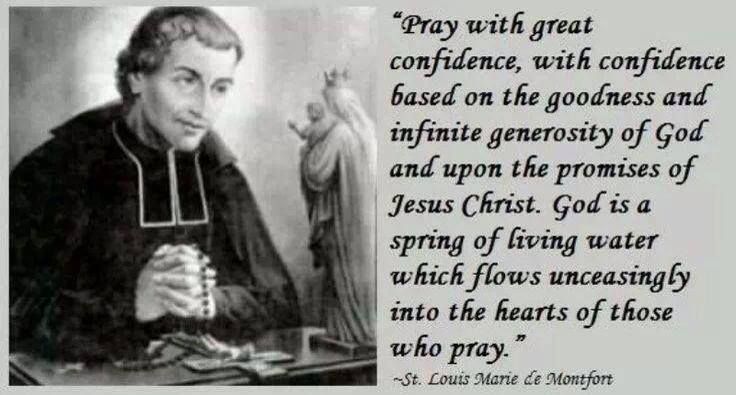 Saint Louis Mary Grignion de Montfort (1673-1716)
Saint Louis Mary Grignion de Montfort (1673-1716)